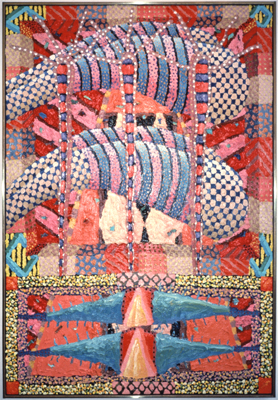About the Artwork
In Yellow No Same artist Roger Shimomura confronts the internment of Japanese Americans during World War II in the 1940s. The artwork explores and comments on America's inability to distinguish between Japanese and Japanese American people. Traditional figures from Japanese woodblock prints and history are in the foreground, while everyday Americans of Japanese descent are shown behind barbed wire in the background. This artwork is part of a collection of artworks located in the University of Washington's Kane Hall. The collection pays tribute to the diversity of UW's campus community and features nine artists whose art explores identity. Student leaders from the UW Minority Think Tank were involved in the selection of the artworks in 2005.
This artwork was acquired for the State Art Collection in partnership with University of Washington.
About the Artist
Celebrated artist Roger Shimomura creates thought-provoking paintings, prints, and performance pieces. His art practice investigates identities and stereotypes, especially as a person who was born and raised in the U.S. and is Asian American.
Born in Seattle, Washington, Shimomura spent two early years of his childhood imprisoned in Minidoka, Idaho, in a World War II Japanese-American internment camp in the 1940s. His family later returned to Seattle. Shimomura was a distinguished military graduate from the University of Washington, earning a Bachelor of Arts degree in commercial design. He served in the Korean War (1950-53). In 1967, he earned his Master of Fine Arts degree from Syracuse University in New York state.
Shimomura was a professor of art at the University of Kansas, Lawrence for 35 years until 2004. He was honored with a Kansas Governor’s Arts Award in 2008. His artworks are in the collections of the Metropolitan Museum of Art (NYC), Smithsonian Museum of American Art (Washington D.C.), the National Portrait Gallery (Washington D.C.), and more. His personal papers are being collected by the Smithsonian Institution.


_edited.jpg)
_edited.jpg)
_edited.jpg)
_edited.jpg)
_edited.jpg)
_edited.jpg)
_edited.jpg)
_edited.jpg)
_edited.jpg)
_edited.jpg)
_edited.jpg)
_edited.jpg)
_edited.jpg)
_edited.jpg)


